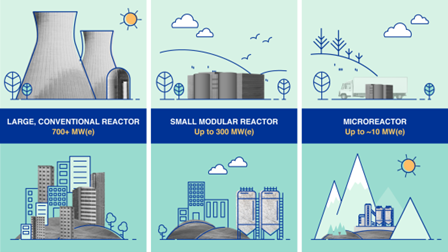Table of Contents
Performance Audit
Context: The Supreme Court of India has reinforced the judiciary’s role in directing the government to perform “performance audits” on statutory laws to assess their real-world impact.
More on News
- The judiciary has the authority and responsibility to direct the government to conduct performance audits of its laws.
- Such audits can be ordered when there is judicial data or compelling evidence showing that the laws have not achieved their goals.
About Performance Audit
- A performance audit evaluates the efficiency, effectiveness, and economy of a government program, law, or project.
- Unlike financial audits, which focus on accuracy and compliance, performance audits aim to assess whether the objectives of a law or program are being met and how well resources are being utilised to achieve those goals.
Kenya
Context: Violent Protests in Kenya due to the passage of a controversial financial bill.
About Kenya
- Kenya is located in East Africa. Its terrain rises from a low coastal plain on the Indian Ocean to mountains and plateaus at its centre.
- Kenya shares its border with five countries namely: Tanzania in the South, Uganda in the West, South Sudan in the North West, Ethiopia in the North and Somalia in the East
- Kenya is renowned for its wildlife and is a popular destination for safaris. National parks and reserves, including the Maasai Mara, Amboseli, and Tsavo, offer opportunities to witness a wide variety of animals.
- Lamu Archipelago is in Kenya.

| Insightful Extras |
|
Related UPSC PYQ
- Consider the following statements:
- Bidibidi is a large refugee settlement in northwestern Kenya.
- Some people who fled from the South Sudan civil war live in Bidibidi.
- Some people who fled from the civil war in Somalia live in the Dadaab refugee complex in Kenya.
Which of the statements given above is/are correct?
a) 1 and 2
b) 2 only
c) 2 and 3
d) 3 only
Ans: C
Statement 1 is incorrect: Bidibidi became the World’s second-largest refugee settlement in the World and the biggest in Africa, it is located in Uganda.
Small Modular Reactors (SMR’s)
Context: The Indian government is planning to team up with the private sector to study and test small modular reactors (SMRs).
About SMR
- Small modular reactors (SMRs) are advanced nuclear reactors that have a power capacity of up to 300 MW(e) per unit, which is about one-third of the generating capacity of traditional nuclear power reactors.
- SMRs, which can produce a large amount of low-carbon electricity, are:
- Small – physically a fraction of the size of a conventional nuclear power reactor.
- Modular – making it possible for systems and components to be factory-assembled and transported as a unit to a location for installation.
- Reactors – harnessing nuclear fission to generate heat to produce energy.
- Advantages of SMR’s:
- SMRs are designed to operate for 40-60 years with capacity factors exceeding 90%.
- They can produce a large amount of low-carbon electricity.
- They can be manufactured off-site – significantly saving construction time.
- reduced build and running costs (designed to require lesser fuel and fewer staff for location assembly, maintenance and operation) and increased efficiency.
- SMRs can generate less electricity when demand is down and are particularly useful for power generation in remote locations.
- SMRs can be installed in decommissioned thermal power plant sites by repurposing existing infrastructure.

| Insightful Extras |
International Atomic Energy Agency
|
Futures and Options
Context: SEBI has proposed a series of steps to restrain speculative trading in the index derivatives segment.
About Futures
- A futures contract is a legal agreement to buy or sell a specific commodity, asset, or security at a predetermined price on a specified future date.
- It is used for hedging or speculative purposes in financial markets
- The buyer must purchase or the seller must sell the underlying asset at the set price, regardless of the current market price at the expiration date.
- Underlying assets include physical commodities and financial instruments (stocks, currencies and bonds etc.)
About Option Contracts
- An option is a contract that gives an investor the right but not the obligation to buy or sell a commodity at a specified price at a specified future date.
- They carry limited risk and can reap either unlimited profit or loss.
- Advance is paid in the form of premiums in option contracts.
Axis of Resistance
Context: Hamas leader Ismail Haniyeh was assassinated in an air strike in Tehran.
Formation and Purpose of the ‘Axis of Resistance’
- Origin: The ‘axis of resistance’ was formed in the wake of the Iranian Revolution of 1979 when radical Shia Muslim clerics rose to power in Iran.
- Objective: The coalition was established to expand Iran’s political and military influence in a predominantly Sunni region, counter threats from Israel and the US, and oppose Western influence in the Middle East.
- Name Inspiration: The term ‘axis of resistance’ is a response to former US President George W. Bush’s reference to Iran, Iraq, and North Korea as an “axis of evil” in his 2002 State of the Union address.
Key Groups in the ‘Axis of Resistance’
- Hezbollah:
- Formation: Established by Iran’s Revolutionary Guards in the early 1980s to combat Israeli forces in Lebanon.
- Size and Power: Estimated to have 30,000 to 45,000 members and possesses a significant arsenal.
- Conflicts with Israel: Engaged in multiple conflicts with Israel, including a major war in 2006 and subsequent skirmishes.
- Hamas:
- Background: A Palestinian Sunni militant group that has governed Gaza since 2007 and originated during the first Intifada in 1987.
- Goals: Opposes Zionism and advocates for a Palestinian homeland.
- Support: Receives funding, weapons, and expertise from Iran.
- Palestinian Islamic Jihad (PIJ):
- Formation: Founded in 1979 as an offshoot of the Muslim Brotherhood in Egypt.
- Objective: Aims to establish an Islamic state in Palestine and is considered the second-largest militant group in Gaza and the West Bank.
- Houthis:
- Involvement in Yemen: A Zaydi Shia militant group involved in Yemen’s civil war, controlling northern Yemen and the capital, Sana’a, since 2014.
- Activities: Known for attacking ships in the Red Sea, especially in response to Israeli actions in Gaza.


 Industrial Parks in India: Driving Manuf...
Industrial Parks in India: Driving Manuf...
 National Maritime Heritage Complex (NMHC...
National Maritime Heritage Complex (NMHC...
 Reforming Fertiliser Subsidy in India: N...
Reforming Fertiliser Subsidy in India: N...

























